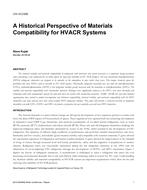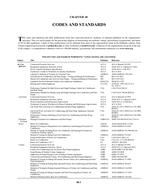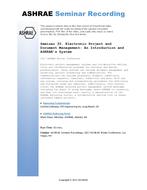In recent years, the use of solar collectors to provide additional heat for space heating of buildings, and particularly for hotwater production, has become more common in Sweden. Such systems function well and can cover about 50 % of the total hotwater demand for a residential building having a heat store with a capacity sufficient for a couple of days. The weakness of such systems is that they can deliver the most heat during warm sunny days, when the need for heating is at its lowest. The energy from the solar panels is normally stored in an accumulator tank with a finite storage capacity, which gives very few options for dealing with the surplus.
This paper presents measurements from a new residential building in Sweden—Villa Gustafson—where the major part of the heating is produced by solar collectors operating in combination with a ground heat pump. The surplus from the solar collectors during warm sunny days is stored in the ground beneath the building. During cold weather, this stored heat heats up the building via the heat pump. The system improves the operating conditions of both the solar collectors and the heat pump. The house was built and the solar system started during the summer of 2008. The paper presents measurements of the system for the first year. The different temperatures to and from the system, as well as the temperature in the heat store beneath the building, were measured, as was energy use. The measured values for the first year (2009), with an average outdoor temperature of 6.7°C (44.1°F), indicate that annual energy use for space heating and domestic hot-water production should not exceed 14 kWh/m2 (4.4 kBtu/ft2) per year.
Citation: Thermal Performance, International Conference, 2010
Product Details
- Published:
- 2010
- Number of Pages:
- 5
- File Size:
- 1 file , 1.3 MB
- Product Code(s):
- D-BUILDINGSXI-108


